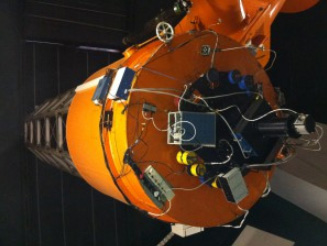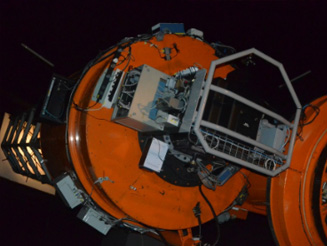The instrumentation division builds, maintains and supports the various instruments used on telescopes in Sutherland. In the division we have expertise in mechanical, electronic and software engineering, and a mechanical workshop able to fabricate the most complex and delicate of components. We work closely with astronomers to specify and design instruments suitable for the needs of the astronomical community.
Instruments vary in detail and fundamental purpose, but at their heart is almost always a charge-coupled device (CCD) to detect light. Astronomy is often about making the most of only a little available light, so reading the signal from the detector with as little noise as possible is essential. Keeping the CCD very cold makes a huge difference, and to do this in turn requires that the CCD be kept in a very good vacuum. So nearly all instruments built by SAAO’s workshop require a cryostat to hold a vacuum and keep the detector cold. Building cryostats is a speciality of our group.
Instruments have other parts too – most components are controlled by electronic devices, and we design and build these too. These include shutters and various filtering mechanisms.
Designing the various components so that they work well together, and fit into what are often very constrained spaces, is the job of the mechanical design department.
The mechanical workshop has the daunting task of machining (to extremely fine tolerances) the various bits that make up the instruments.
Finally, the astronomers interact with the instruments through software. We’ve developed a distributed software system for the instruments. That means that each hardware component is controlled by a standalone piece of software, which each communicate with a centralised controller. The controller is able to support a variety of user interfaces. The primary way for astronomers to control and interact with our instruments is through a web interface – not only does this enable remote operation of the instruments, but also paves the way for instruments to be incorporated into SAAO’s future plans for The Intelligent Observatory Project.



